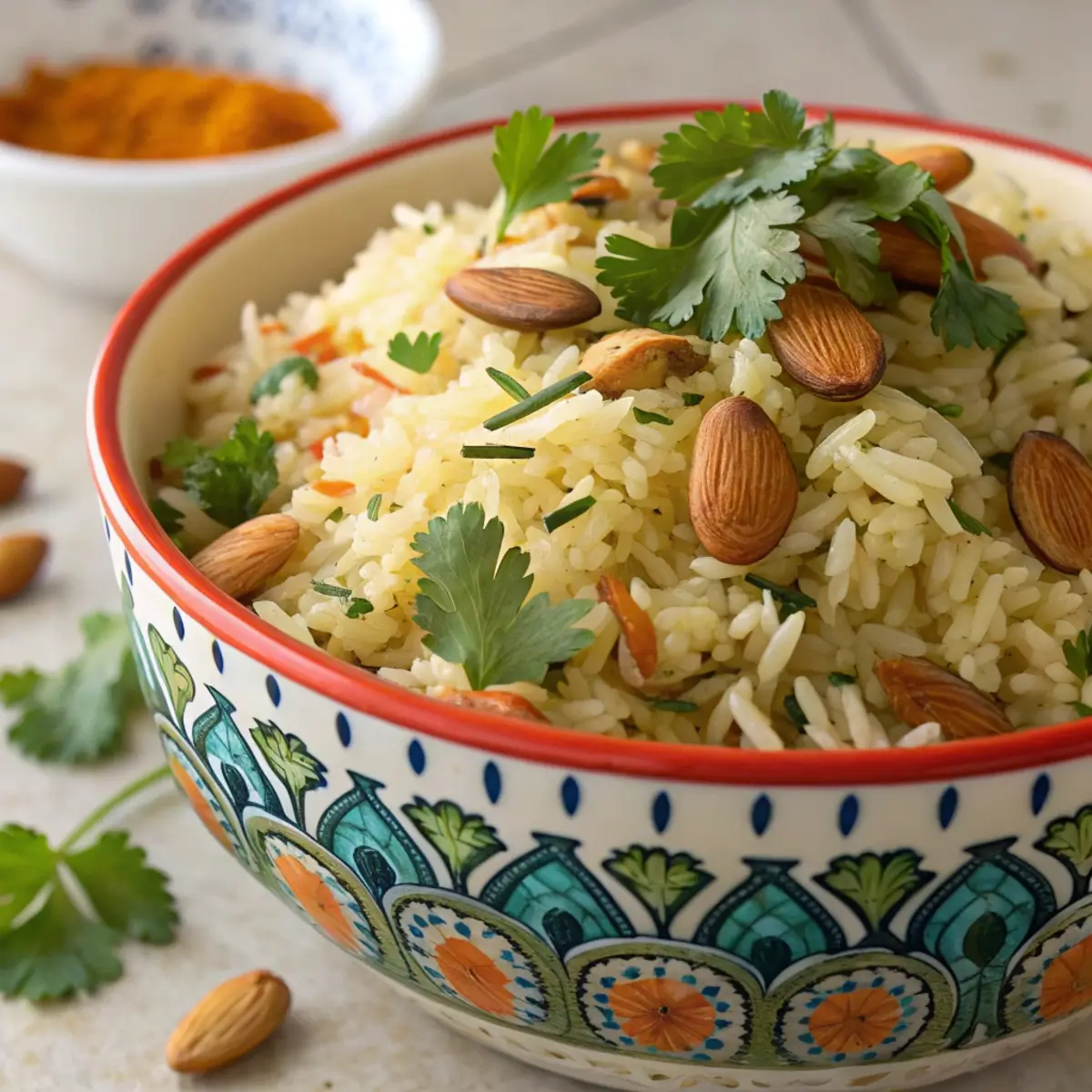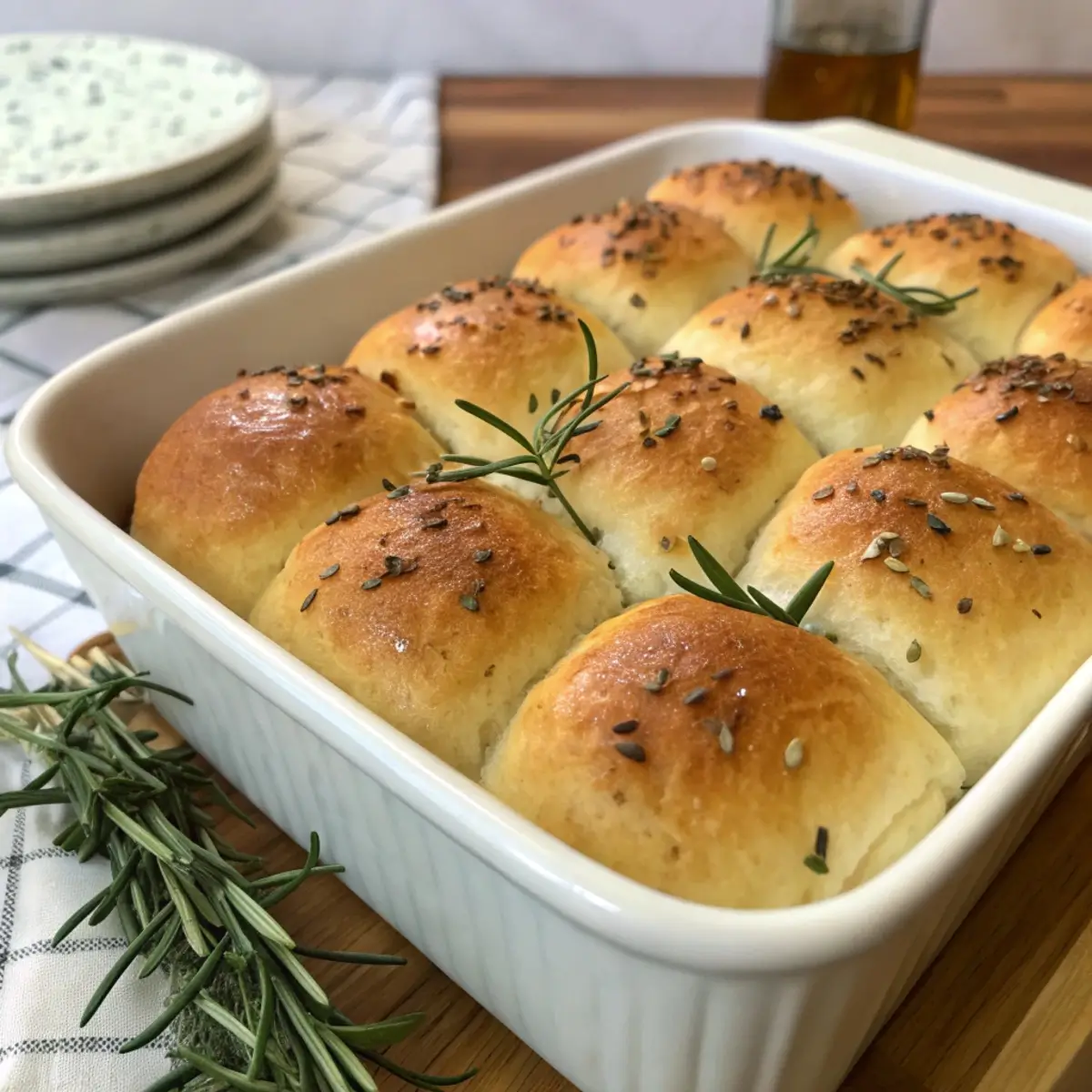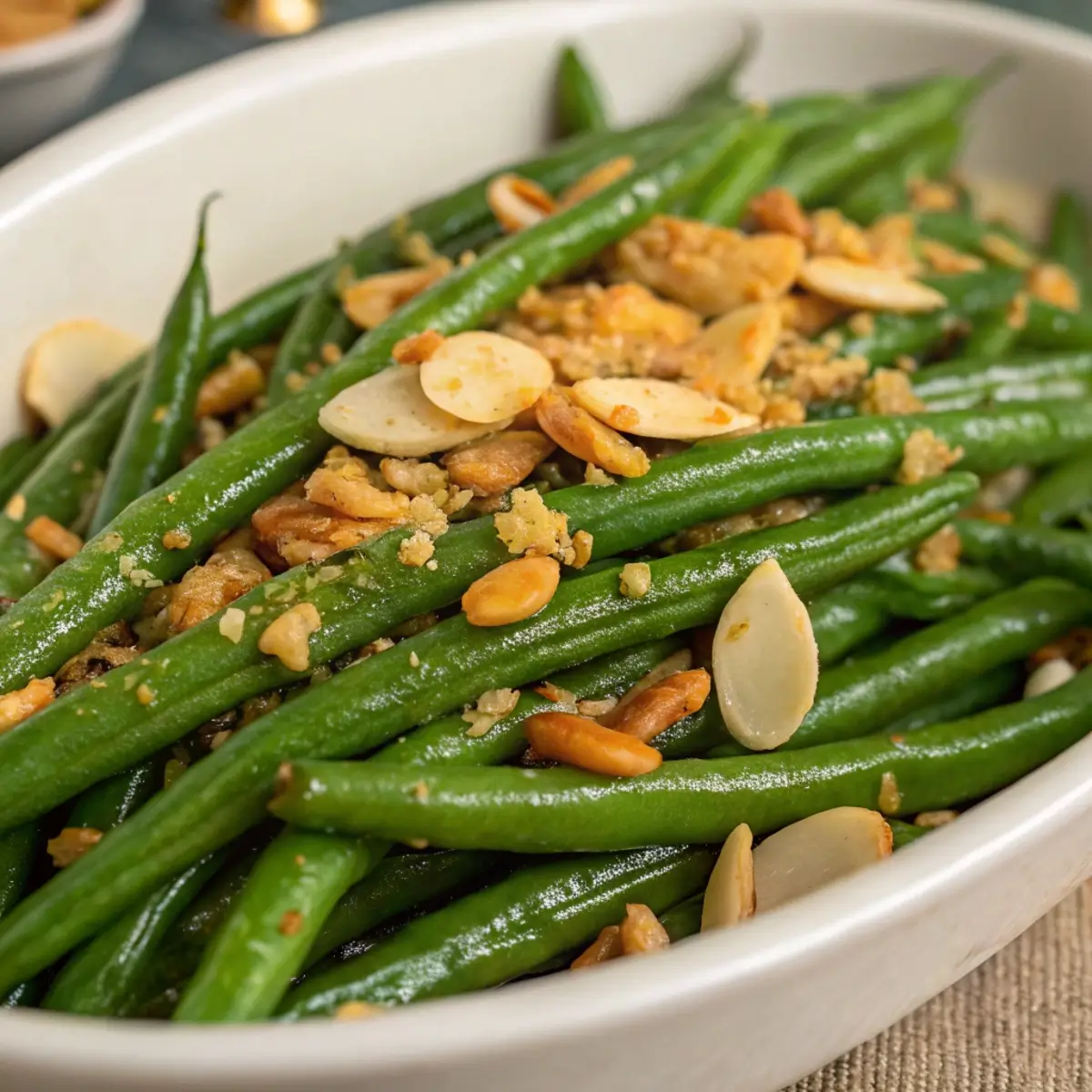Contents
- 1 What Makes Christmas Rice Pilaf So Perfect for the Holidays
- 2 Ingredients for Christmas Rice Pilaf with Toasted Almonds
- 3 Why Long-Grain Rice Works Best
- 4 Toasting the Almonds for Maximum Flavor
- 5 How to Prepare Christmas Rice Pilaf
- 6 A Festive Twist: Add-ins That Elevate the Holiday Flavor
- 7 Pairing Christmas Rice Pilaf with Holiday Main Courses
- 8 Holiday Presentation Ideas
- 9 Make-Ahead Tips for Stress-Free Holiday Cooking
- 10 Storing and Freezing
- 11 Troubleshooting Tips for Perfect Pilaf
- 12 Nutrition and Dietary Notes
- 13 Frequently Asked Questions
Christmas dinners are often a vibrant mix of colors, aromas, and textures—roasted vegetables, golden potatoes, rich gravies, savory main courses, and cheerful pops of red and green from seasonal produce. Yet among all the holiday favorites, rice pilaf often goes overlooked. This year, elevate your Christmas table with a dish that is elegant, fragrant, and wonderfully festive: Christmas Rice Pilaf with Toasted Almonds and Fresh Herbs.
This dish is light yet flavorful, simple yet elegant, and universally loved because it complements any main course without overpowering it. Whether you’re serving roasted chicken, beef, turkey, salmon, or vegetarian mains, rice pilaf is the perfect base that ties your menu together. This version is especially special for the holidays because it incorporates winter herbs, buttery toasted almonds, and subtle seasonal spices that make it feel warm and celebratory.
Best of all, it requires no pork, no bacon, no wine, and no alcohol of any kind—just wholesome ingredients that bring out natural flavor. It’s ideal for Christmas Eve dinners, Christmas Day menus, winter potlucks, and holiday buffets where guests appreciate lighter, fragrant alternatives to heavier sides.
From fragrance to texture to presentation, this Christmas Rice Pilaf becomes an effortless holiday classic you’ll want to make every winter.
What Makes Christmas Rice Pilaf So Perfect for the Holidays
Rice pilaf is loved for its warm, fluffy texture and its ability to soak up flavor. Unlike plain rice, pilaf is toasted lightly in butter or oil before simmering in a flavorful broth. This process gives it a deeper aroma, more structure, and beautifully separated grains.
During the Christmas season, rice pilaf becomes even more special thanks to:
Seasonal herbs
Fresh rosemary, parsley, and thyme add a wintery, aromatic touch that pairs beautifully with holiday entrees.
Toasted almonds
Buttery, golden almonds provide a delicate crunch and nutty richness that makes the dish feel luxurious.
Bright holiday colors
Green herbs and the soft golden shine of the rice give the pilaf a festive appearance on the table.
Light-but-satisfying texture
When Christmas meals tend to be heavy, this pilaf offers a refreshing balance.
Universal compatibility
Everyone at the table can enjoy this dish. It’s wholesome, pork-free, alcohol-free, and free of heavy ingredients.
It’s the kind of side dish that quietly stands out because it offers harmony to any holiday plate.
Ingredients for Christmas Rice Pilaf with Toasted Almonds
This recipe uses easy, familiar ingredients that work beautifully together:
-
2 cups long-grain rice (Basmati or Jasmine preferred)
-
3 ½ cups vegetable or chicken broth (alcohol-free)
-
2 tablespoons unsalted butter
-
1 tablespoon olive oil
-
1 small onion, finely diced
-
2 cloves garlic, minced
-
½ cup sliced almonds
-
1–2 tablespoons fresh parsley, chopped
-
1 tablespoon fresh thyme leaves
-
1 teaspoon very finely chopped fresh rosemary
-
½ teaspoon salt (adjust to taste)
-
¼ teaspoon black pepper
-
Optional additions: golden raisins, dried cranberries, green peas, or orange zest for an extra holiday twist
The blend of herbs and toasted nuts gives this pilaf its signature holiday flavor.
Why Long-Grain Rice Works Best
Long-grain rice—particularly Basmati or Jasmine—yields:
-
Fluffy texture
-
Separate grains
-
Lightness instead of stickiness
-
Perfect absorption of broth and seasonings
Short-grain varieties tend to turn creamy or sticky, which isn’t the goal for pilaf. Long-grain types maintain beautiful structure.
Toasting the Almonds for Maximum Flavor
Toasted almonds bring a rich nuttiness and their crunch balances the softness of the rice. Toasting greatly enhances flavor.
How to toast almonds:
-
Place almonds in a dry skillet over medium heat.
-
Stir frequently to avoid burning.
-
Toast until golden and fragrant, about 3–4 minutes.
-
Transfer immediately to a plate to stop cooking.
You may also toast them in a bit of butter for a richer holiday finish.
How to Prepare Christmas Rice Pilaf
This dish may taste sophisticated, but the process is simple and beginner-friendly.
Step 1: Wash the Rice
Rinse under cold water until the water runs nearly clear.
This removes excess starch and prevents the rice from sticking.
Step 2: Sauté the Aromatics
-
In a large skillet or saucepan, heat olive oil and 1 tablespoon butter.
-
Add diced onion and cook until soft and translucent, about 4 minutes.
-
Add garlic and sauté for 30 seconds, until fragrant.
This builds the savory, aromatic base of the pilaf.
Step 3: Toast the Rice
-
Add the rinsed rice to the pan.
-
Stir to coat all grains in the butter and aromatics.
-
Toast for 2–3 minutes until slightly golden and fragrant.
Toasting helps the grains stay separate after cooking and deepens the flavor.
Step 4: Add Broth and Herbs
-
Pour in the broth.
-
Add salt, pepper, rosemary, thyme, and parsley.
-
Stir gently to incorporate.
Step 5: Simmer
-
Bring to a gentle boil.
-
Once boiling, reduce heat to low.
-
Cover and simmer for 15–18 minutes until liquid is absorbed.
Do not open the lid during cooking—steam is essential for fluffy texture.
Step 6: Let Rest
Turn off heat and allow the rice to rest covered for 10 minutes.
This step finishes steaming and firms up the grains.
Step 7: Add Toasted Almonds
Gently fluff rice with a fork, then fold in toasted almonds.
The result is aromatic, buttery, and beautifully festive rice that’s ready to serve.
A Festive Twist: Add-ins That Elevate the Holiday Flavor
You can customize this pilaf to match your Christmas menu. Here are flavorful variations:
Cranberry Almond Pilaf
Add ⅓ cup dried cranberries for sweetness and holiday color.
Orange Herb Rice
Add ½ teaspoon orange zest for brightness.
Pomegranate Pilaf
Stir in ½ cup pomegranate seeds right before serving.
Winter Vegetable Pilaf
Incorporate peas, carrots, or finely diced bell peppers.
Golden Raisin Pilaf
Adds natural sweetness that pairs beautifully with almonds.
These variations make your dish adaptable for Christmas Eve, holiday brunch, or full Christmas dinner.
Pairing Christmas Rice Pilaf with Holiday Main Courses
This pilaf works with almost every holiday entrée thanks to its neutral but aromatic flavor.
Perfect Pairings Include:
Poultry
-
Herb-roasted chicken
-
Christmas turkey
-
Lemon butter chicken
Beef
-
Roast beef
-
Beef tenderloin
-
Garlic herb flank steak
Seafood
-
Baked salmon
-
Lemon herb cod
-
Garlic butter shrimp
Vegetarian Mains
-
Stuffed acorn squash
-
Mushroom Wellington
-
Lentil loaf
-
Roasted cauliflower steaks
Its versatility makes it a reliable side dish when hosting large groups with varied taste preferences.
Holiday Presentation Ideas
Rice pilaf can look as beautiful as it tastes. Try these simple festive plating tips:
-
Serve in a white or gold-rimmed bowl for holiday elegance
-
Top with extra almonds for texture
-
Add a sprinkle of fresh herbs for color
-
Garnish with a few pomegranate seeds for Christmas red
-
Arrange next to roasted vegetables for contrast
-
Use a sprig of fresh rosemary on top for aroma
Presentation can transform a simple pilaf into a show-stopping side dish.
Make-Ahead Tips for Stress-Free Holiday Cooking
Christmas cooking can get hectic. Fortunately, rice pilaf is very forgiving and can be prepped in different stages.
Prepare Components Ahead
-
Toast almonds 2–3 days in advance
-
Chop herbs the day before
-
Measure out spices and rice ahead of time
Make the Pilaf Ahead
-
Cook completely
-
Cool
-
Refrigerate up to 48 hours
Reheat Without Drying Out
Reheat gently in a covered dish with a splash of broth to restore fluffiness.
Oven method:
-
300°F for 20–25 minutes
Stovetop method:
-
Heat on medium-low, covered, stirring occasionally
Microwave method:
-
Cover and heat in intervals, stirring between rounds
The dish reheats beautifully, making it excellent for potlucks and large gatherings.
Storing and Freezing
Refrigeration
Store in an airtight container for 3–4 days.
Freezing
Freeze cooked pilaf in a freezer-safe bag for up to 2 months.
To reheat, thaw overnight and warm with broth for best texture.
Troubleshooting Tips for Perfect Pilaf
Rice is Mushy
-
Too much liquid
-
Rice wasn’t rinsed
-
Heat was too high during simmering
Rice Is Crunchy
-
Not enough cooking time
-
Lid was opened too early
-
Too little liquid
Rice Sticks Together
-
Didn’t toast long enough
-
Too much stirring during cooking
Rice Is Bland
-
Add more herbs
-
Use broth instead of water
-
Adjust salt and butter
Once you master these nuances, you’ll make perfect pilaf every single time.
Nutrition and Dietary Notes
This Christmas Rice Pilaf is:
-
Pork-free
-
Alcohol-free
-
Naturally gluten-free
-
Vegetarian-friendly (use vegetable broth)
-
Rich in herbs and whole ingredients
It fits seamlessly into nearly any dietary plan, making it excellent for gatherings with diverse guests.
Frequently Asked Questions
Can I use brown rice instead of white?
Yes, but simmer for 40–45 minutes and add more liquid.
Can I make this without nuts?
Absolutely. Omit almonds or replace them with toasted pumpkin seeds.
Can I use dried herbs instead of fresh?
Yes. Use ⅓ the amount since dried herbs are more concentrated.
Can I prepare this for a large crowd?
Yes—this recipe scales easily. Rice pilaf is excellent for holiday potlucks.
Does it work in a rice cooker?
Yes. Toast the rice and aromatics first, then transfer everything (including broth) into the rice cooker.
Is this dish kid-friendly?
Very. It’s mild, soft, and lightly seasoned—perfect for all ages.





